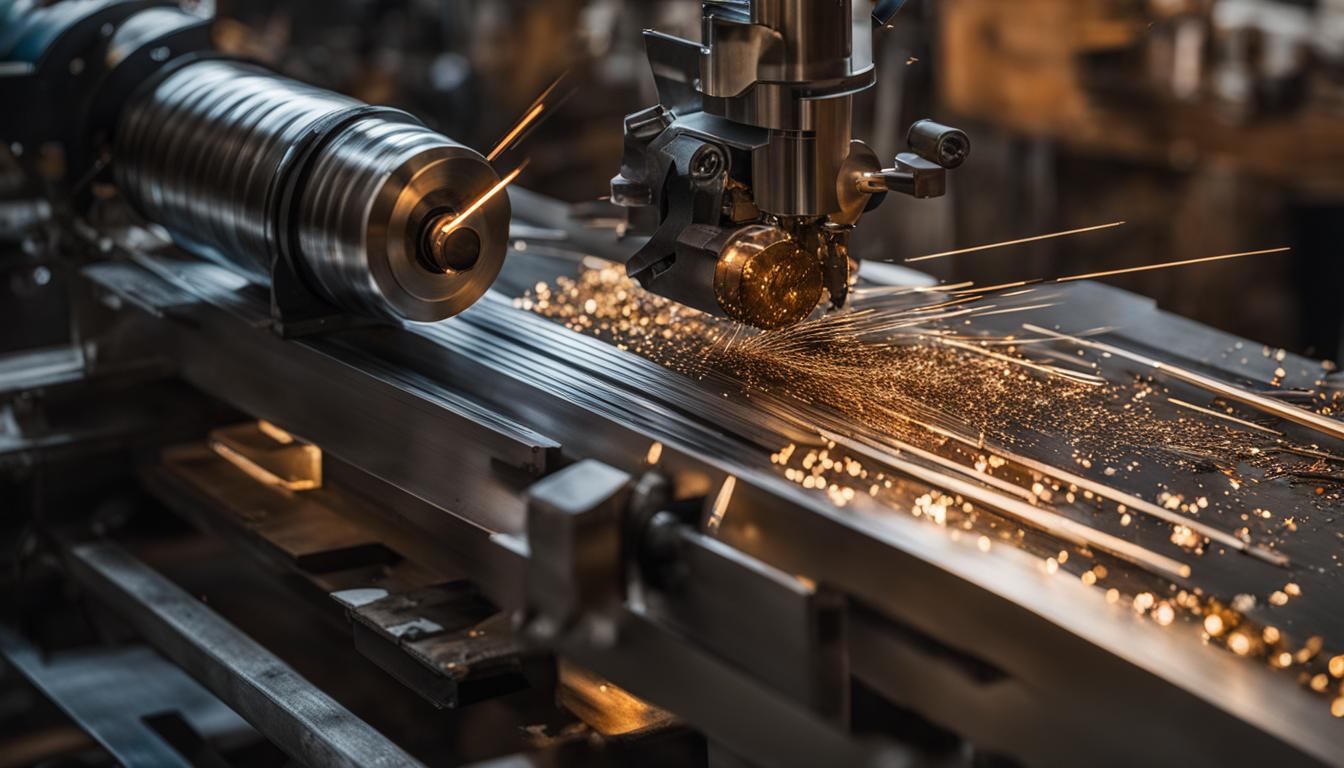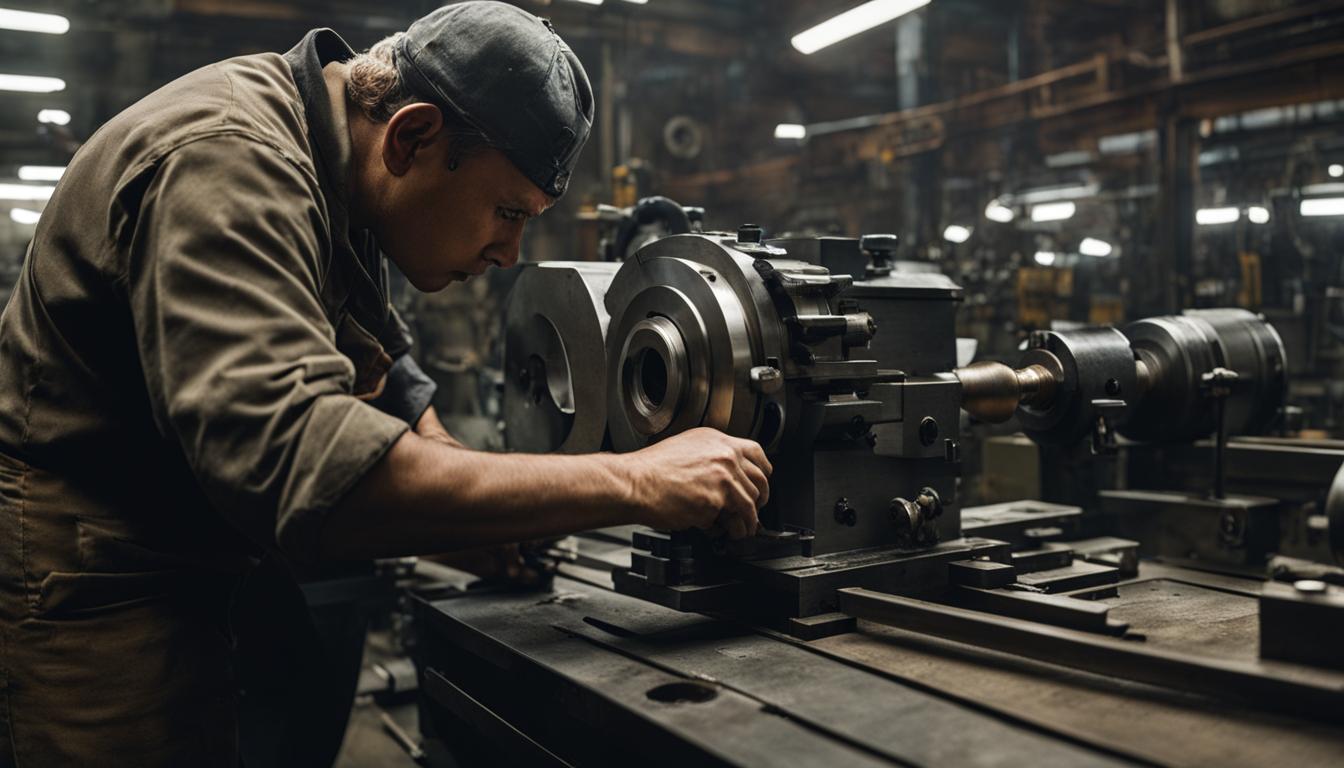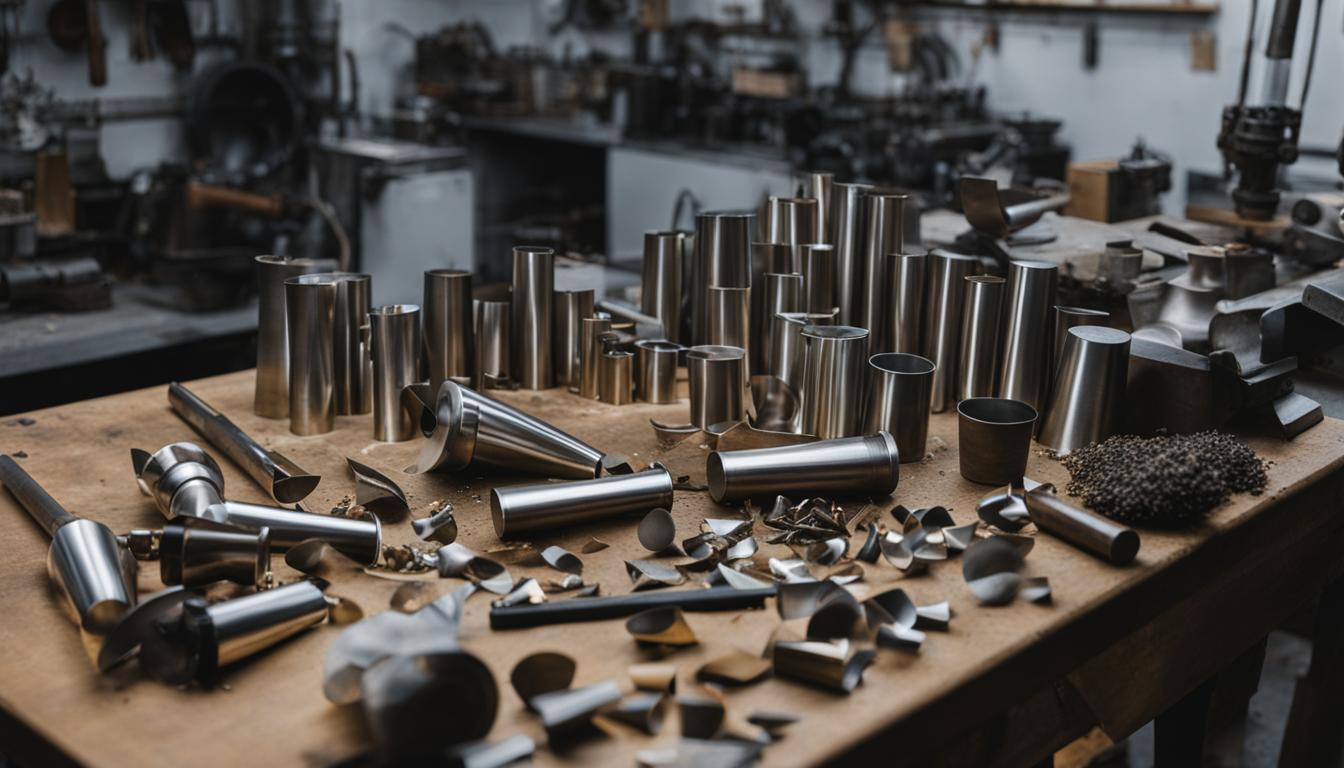Metal lathe projects offer a journey from novice to master, allowing enthusiasts to unleash their creativity and develop valuable skills. Beginners can start with simple projects like creating custom bolts, knobs, or small decorative items, gradually progressing to more complex tasks such as crafting precision machine parts or intricate artistic pieces. As skills improve, intermediate projects might include making custom tools, chess pieces, or small engine components.
Advanced lathe users can tackle challenging projects like crafting musical instruments, custom motorcycle parts, or even miniature working engines. Throughout this progression, practitioners learn essential techniques such as facing, turning, boring, threading, and taper turning. The journey also involves mastering the use of various tools and attachments, understanding different materials, and developing an eye for precision and detail. By engaging in diverse projects, lathe enthusiasts not only enhance their technical abilities but also cultivate problem-solving skills, patience, and artistic expression. This hands-on experience transforms novices into skilled craftsmen, capable of producing both functional and aesthetically pleasing objects while continually pushing the boundaries of their creativity and expertise.
- Discover the world of metal lathe projects and unleash your creativity.
- Learn essential metalworking skills and techniques through a beginner’s guide.
- Explore a wide range of DIY metalwork projects suitable for hobbyists.
- Gain confidence and refine your craftsmanship with creative techniques.
- Embark on a journey of learning and growth in the art of metalworking.
Understanding the Basics of a Metal Lathe
Before diving into the world of metal lathe projects, it is crucial to have a solid understanding of the basics. A metal lathe is a powerful tool that can transform raw metal into intricate and functional pieces of art. To effectively operate a metal lathe, you need to familiarize yourself with its various components and follow essential safety measures.
The Components of a Metal Lathe
Let’s start by exploring the key components of a metal lathe:
| Component | Description |
|---|---|
| Bed | The base of the lathe that provides stability and support. |
| Headstock | Holds the main spindle and provides rotational power to the workpiece. |
| Tailstock | Secures the other end of the workpiece and can be adjusted for different lengths. |
| Tool Post | Holds cutting tools and allows for precise positioning and adjustment. |
Cutting Tools and Safety Measures
Next, let’s discuss the cutting tools used in metal lathe projects. These tools include various types of turning tools, parting tools, boring tools, and threading tools. Each tool has a specific purpose and requires proper handling and maintenance.
To ensure a safe working environment, it is crucial to follow these safety measures:
- Wear appropriate safety gear, including goggles, gloves, and ear protection.
- Securely fasten the workpiece in the lathe using a chuck or a collet.
- Keep your workspace clean and organized to prevent accidents.
- Regularly inspect and maintain the lathe to ensure optimal performance.
Workpiece Alignment and Machine Maintenance
Proper workpiece alignment is essential for achieving accurate results in metal lathe projects. It involves aligning the center of the workpiece with the centerline of the lathe’s spindle. This alignment ensures symmetrical turning and avoids unwanted vibrations or wobbling.
Additionally, regular machine maintenance is vital to keep your metal lathe in optimal condition. This includes cleaning, lubricating, and inspecting the lathe’s components, as well as checking for any signs of wear or damage.
By understanding the basics of a metal lathe, including its components, cutting tools, safety measures, workpiece alignment, and machine maintenance, you will lay a strong foundation for your metalworking journey. With these fundamentals in place, you’ll be ready to unleash your creativity and explore the endless possibilities of metal lathe projects.
Mastering Turning Techniques on a Metal Lathe
Turning is a fundamental operation in metalworking that allows you to shape and refine your workpiece. Mastering the various turning techniques on a metal lathe is crucial for achieving accurate and high-quality results. In this section, we will explore four essential turning techniques: facing, chamfering, taper turning, and threading.
Facing
Facing is the process of creating a flat surface at the end of your workpiece. It is typically the first step in many metal lathe projects. To face a workpiece, follow these step-by-step instructions:
- Secure the workpiece in the lathe chuck.
- Position the cutting tool at the desired depth of cut.
- Engage the lathe’s power feed or manually feed the cutting tool towards the workpiece.
- Repeat the process as needed for multiple facing operations.
Chamfering
Chamfering is the process of creating a beveled edge on the workpiece. This technique is commonly used to remove sharp corners and improve the overall aesthetics of the finished piece. Follow these steps to chamfer a workpiece:
- Secure the workpiece in the lathe chuck.
- Position the cutting tool at the desired angle and depth of cut.
- Engage the lathe’s power feed or manually feed the cutting tool towards the workpiece.
- Allow the cutting tool to move along the edge of the workpiece, creating a beveled edge.
- Repeat the process as needed for multiple chamfering operations.
Taper Turning
Taper turning is the process of creating a tapered shape on the workpiece. This technique is often used for creating conical shapes or matching existing tapered components. To perform taper turning, follow these steps:
- Secure the workpiece in the lathe chuck.
- Position the cutting tool at the desired angle and depth of cut.
- Engage the lathe’s power feed or manually feed the cutting tool towards the workpiece.
- Gradually adjust the depth of cut and feed rate to create the desired taper.
- Continue cutting until the desired taper is achieved.
Threading
Threading is the process of creating screw threads on a workpiece. This technique is commonly used for creating fasteners or threaded components. To thread a workpiece, follow these steps:
- Secure the workpiece in the lathe chuck.
- Position the cutting tool at the desired depth of cut and thread pitch.
- Engage the lathe’s power feed or manually feed the cutting tool towards the workpiece.
- Allow the cutting tool to engage with the workpiece and cut the threads.
- Continue cutting until the desired thread length is achieved.
By mastering these turning techniques and following the step-by-step instructions, you’ll be able to achieve accurate results and unlock endless possibilities for your metal lathe projects.
Beginner-Friendly Metal Lathe Projects
As a beginner in the world of metal lathe projects, it’s important to start with simple and attainable projects that build confidence and allow you to practice your turning techniques. These beginner-friendly projects are designed to help you develop your skills while producing functional and aesthetically pleasing pieces.
One project idea for beginners is turning a cylindrical pen holder. This project allows you to create a practical and stylish accessory for your desk or workspace. By mastering the art of turning cylindrical shapes, you’ll gain a solid foundation in the basics of metal lathe work.
Another beginner project worth considering is creating a custom spinning top. This project not only allows you to practice your turning skills but also provides an opportunity to explore different materials and design possibilities. Plus, spinning tops make great gifts and conversation starters!
Beginner-Friendly Metal Lathe Projects Ideas
| Project | Description |
|---|---|
| Cylindrical Pen Holder | Create a functional and stylish pen holder for your desk. |
| Custom Spinning Top | Design and craft your own unique spinning top. |
By starting with these beginner projects, you’ll gain the confidence and skills necessary to take on more complex and intricate metal lathe projects in the future. Remember, practice and perseverance are key to becoming a master in the art of metalworking.
Intermediate-Level Metal Lathe Projects
Once you’ve gained confidence and sharpened your skills with beginner projects, it’s time to take on more intermediate-level projects. These projects will further challenge your abilities and introduce new techniques like parting, knurling, and grooving. By completing these projects, you’ll expand your skillset and broaden your creative horizons.
Bottle Opener
One of the popular intermediate projects for metal lathe enthusiasts is turning a custom bottle opener. With its functional purpose and relatively straightforward design, it allows you to practice precision at different turning stages. You’ll learn the art of creating a smooth handle, incorporating grooving techniques for added grip, and fashioning a sleek opener end. This project will showcase your ability to create a useful tool with both aesthetic appeal and practicality.
Precision Tool Handle
A precision tool handle is another excellent project to test your skills and attention to detail. Whether you’re making a handle for a chisel, screwdriver, or other tool, precision is key. You’ll learn how to create a perfectly fitting grip, ensuring comfort and control during use. Additionally, you can incorporate decorative elements like knurling or engraving to elevate the overall design and showcase your craftsmanship. This project will enhance your ability to create functional yet visually appealing pieces.
Decorative Bowl
If you’re looking to explore more artistic possibilities with your metal lathe, creating a decorative bowl is a great project to pursue. This intermediate-level project allows you to experiment with different shapes and forms while honing your turning and finishing techniques. You can create intricate patterns, add texture through grooving or inlay work, and even incorporate contrasting metals for a striking visual effect. This project will push your creative boundaries and allow you to showcase your artistic spirit.
By taking on these intermediate-level projects, you’ll continue to improve your metal lathe skills and expand your repertoire of techniques. These projects offer a balance of challenge and creativity, allowing you to create functional and visually appealing pieces. Embrace the opportunity to refine your turning techniques and explore new possibilities with each intermediate-level project.
Advanced-Level Metal Lathe Projects
Once you’ve mastered the intermediate-level projects, it’s time to challenge yourself with advanced-level metal lathe projects. These projects will test your precision, problem-solving abilities, and craftsmanship. Let’s explore some exciting projects that will take your metalworking skills to the next level.
1. Machining a Chess Set
Creating a chess set from scratch allows you to showcase your creativity and craftsmanship. Each chess piece requires precise turning, intricate detailing, and careful consideration of proportions. By machining a chess set, you’ll not only enhance your metalworking skills but also produce a functional and visually stunning masterpiece.
2. Fabricating a Steam Engine Model
Building a steam engine model is a complex and rewarding metal lathe project. This project combines turning, milling, and assembly skills to create a fully functional steam engine. You’ll learn how to work with different metal components, align moving parts, and understand the mechanics behind a steam engine. The end result will be a mesmerizing model that demonstrates your technical prowess.
3. Constructing a Metal Kaleidoscope
A metal kaleidoscope is a unique and captivating piece of art. Constructing a kaleidoscope involves precision turning, intricate assembly, and attention to detail. You’ll need to create multiple reflective surfaces, align mirrors and lenses, and design a rotating mechanism. The final product will be a stunning kaleidoscope that showcases your artistic abilities and technical skills.
These advanced-level metal lathe projects will push your limits as a metalworker and allow you to explore the full potential of the lathe. With precision and problem-solving abilities, you’ll be able to create intricate and sophisticated pieces that showcase your expertise and passion for metalworking.
Exploring Artistic Projects on a Metal Lathe
Metal lathe projects aren’t just about creating functional objects; they also provide a platform for artistic expression. With a metal lathe, you can delve into the world of custom designs and create unique works of art. Whether you’re interested in crafting intricate jewelry pieces, sculpting figurines, or adding personalized touches to your projects through engraving and inlay work, the possibilities for creative expression are endless.

Artistic projects on a metal lathe allow you to push the boundaries of what can be achieved with this versatile tool. By combining your craftsmanship with an artistic spirit, you can create pieces that not only showcase your technical skills but also evoke emotions and leave a lasting impression on anyone who lays their eyes on them. From delicate and intricate engravings to bold and vibrant inlay work, the choices are limited only by your imagination.
Exploring Jewelry Making
If you have a passion for jewelry, a metal lathe can be your ultimate creative tool. Using various turning techniques, you can craft stunning rings, bracelets, pendants, and earrings that reflect your unique style. With the ability to work with different metals and incorporate gemstones and other embellishments, you can create one-of-a-kind pieces that make a statement.
Sculpting Figurines
With the precision and control offered by a metal lathe, you can transform a solid block of metal into intricately detailed figurines. Whether you want to create lifelike sculptures or abstract pieces, the metal lathe allows you to shape and refine your designs with ease. From small figurines to larger sculptures, each piece becomes a testament to your artistic vision.
Engraving and Inlay Work
Adding personalized touches to your metal lathe projects is made possible through engraving and inlay work. Engraving allows you to etch intricate patterns, designs, or even text onto your metal pieces, adding a unique and personal touch. Inlay work involves embedding contrasting materials, such as wood or stone, into the metal surface, creating visually captivating effects. These techniques provide endless opportunities for creativity and allow you to make your projects truly stand out.
Artistic projects on a metal lathe offer a fusion of technical skill and imagination. They invite you to explore new techniques, challenge yourself creatively, and create pieces that are not only functional but also works of art. So unleash your creativity, push the boundaries, and let your metal lathe projects become a canvas for your artistic expression.
Tips and Tricks for Overcoming Challenges in Metal Lathe Projects
Working with a metal lathe can be a rewarding but challenging experience. As you embark on your metalworking journey, it’s important to equip yourself with tips and tricks that will help you navigate and overcome common obstacles. Drawing from the expertise of experienced metalworkers, this section provides valuable insights to enhance your problem-solving abilities and ensure successful project outcomes.
Choosing the Right Cutting Tools
One of the key factors that determine the quality of your metal lathe projects is selecting the appropriate cutting tools. Different materials and cutting techniques require specific tools to achieve desired results. Consider factors such as tool geometry, material compatibility, and tool coatings to optimize your cutting performance. Experimentation and consultation with experienced metalworkers can help you discover the best tools for your projects.
Mastering Cutting Speeds
Another crucial aspect of metal lathe projects is understanding and controlling cutting speeds. Improper cutting speeds can lead to issues like tool wear, chatter, and poor surface finish. Play around with different cutting speeds while observing the effects on your workpiece. Keep in mind that the material being machined, tooling, and the desired finish will influence the ideal cutting speed. By refining your cutting speed techniques, you’ll achieve better precision and enhance the overall quality of your projects.
Troubleshooting Common Issues
Even with careful planning and execution, you may still encounter challenges during metal lathe projects. Troubleshooting common issues, such as tool chatter, poor surface finish, or inaccurate dimensions, requires a systematic approach. Develop an understanding of the possible causes of these issues and learn how to address them effectively. Refer to troubleshooting guides, seek advice from experienced metalworkers, and continuously refine your problem-solving abilities. Over time, you’ll become more adept at identifying and resolving issues, ensuring smoother project workflows.

| Common Challenges | Possible Solutions |
|---|---|
| Tool Chatter | Use sharper tools, reduce cutting speed, and ensure proper tool alignment. |
| Poor Surface Finish | Optimize cutting speed and feed rate, use appropriate cutting fluids, and consider different tooling options. |
| Inaccurate Dimensions | Check machine calibration, ensure proper workpiece alignment, and double-check measurements during the machining process. |
By implementing these tips and tricks in your metal lathe projects, you’ll be better equipped to overcome challenges and achieve excellent results. Remember to constantly learn from experienced metalworkers, practice problem-solving techniques, and adapt your approach as you gain more proficiency. With dedication and continued improvement, you’ll unlock the full potential of your metalworking craft.
The Transformative Power of Metal Lathe Projects
Embarking on a journey from novice to master in metal lathe projects requires dedication, perseverance, and an imaginative spirit. The transformative power of working with a metal lathe is unparalleled, offering limitless possibilities for craftsmanship and artistic expression.
With each project, you’ll discover the beauty of shaping raw metal into intricate and functional pieces. It’s a process that demands dedication, as you refine your skills and techniques through practice and experimentation. As you push the boundaries of what’s possible, you’ll unlock your artistic spirit and watch your creations come to life.
Through metal lathe projects, you’ll delve into the world of craftsmanship, honing your skills and perfecting your technique. Every piece you create is a testament to your growth as a metalworker, showcasing the mastery you’ve attained. By combining precision, patience, and a touch of imagination, you’ll transform simple chunks of metal into stunning masterpieces.
So, let your dedication guide you, your perseverance fuel your progress, and your imagination soar. With each project, you’ll uncover new techniques, overcome challenges, and embrace the transformative power of metal lathe projects. Embody the spirit of an artist and explore the vast possibilities that metalworking offers. Your journey awaits.
